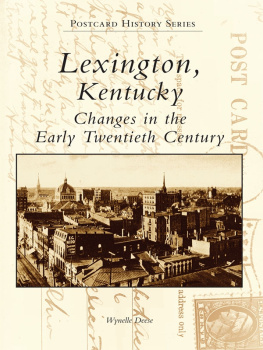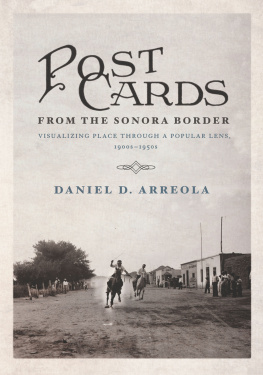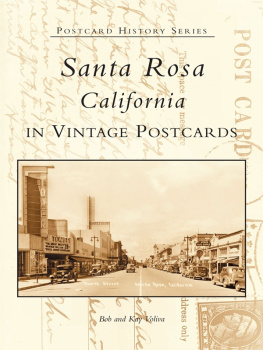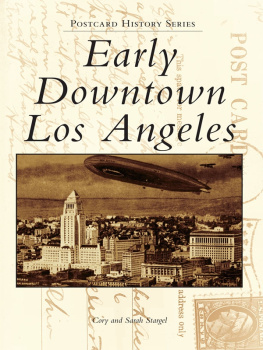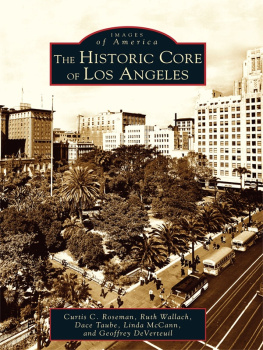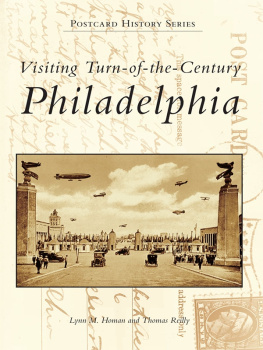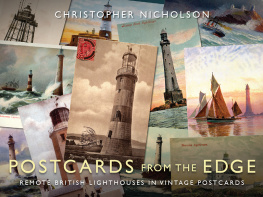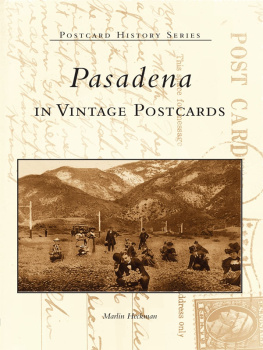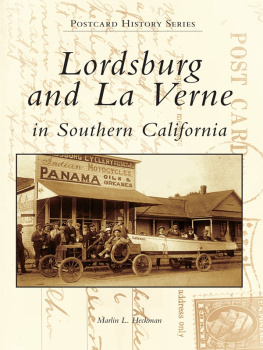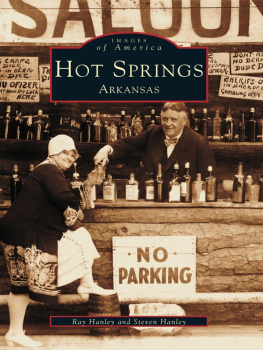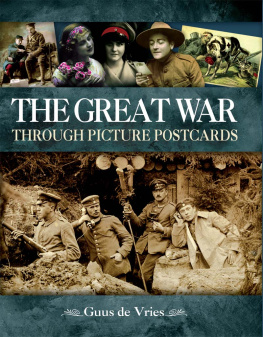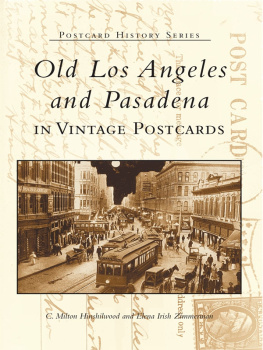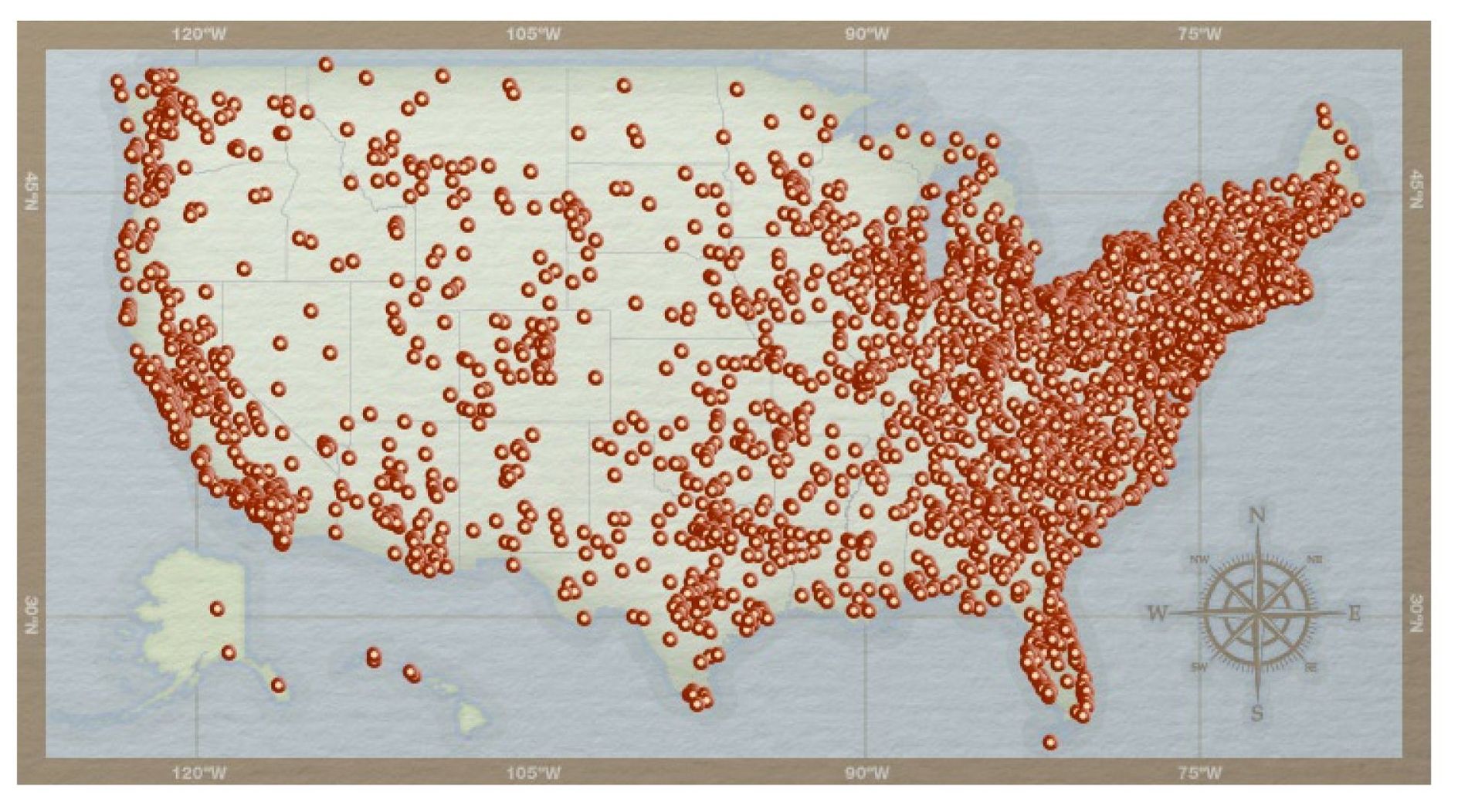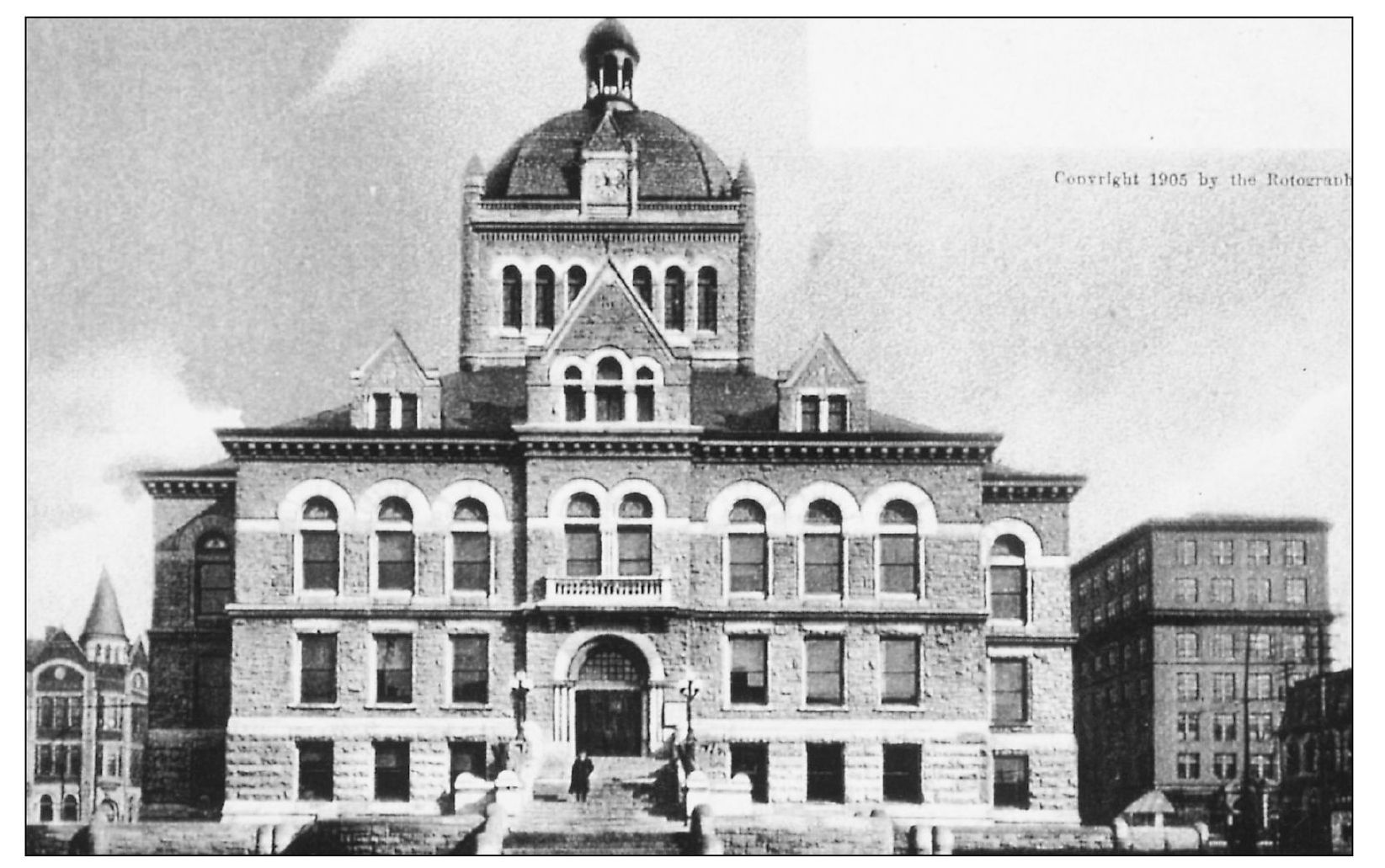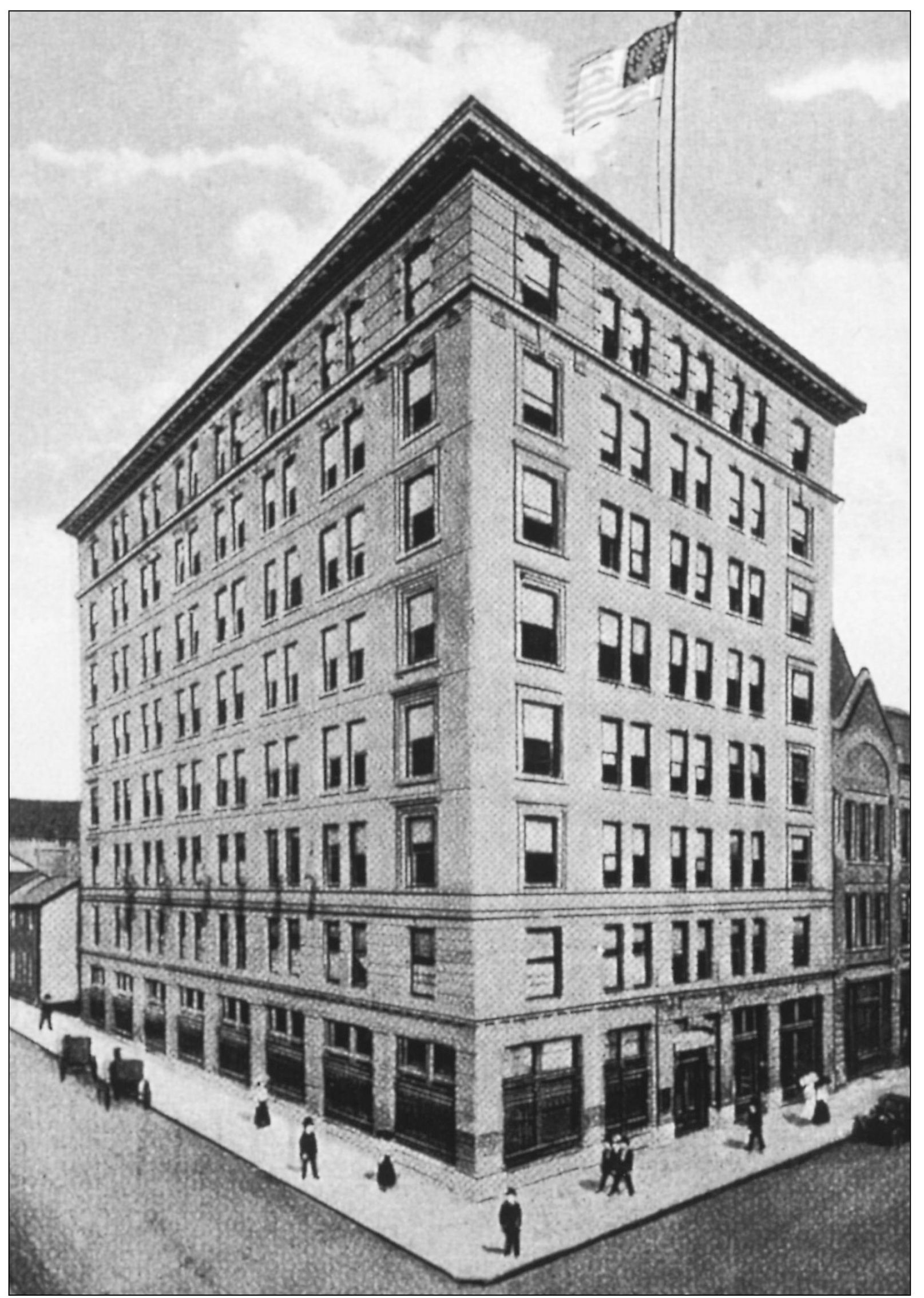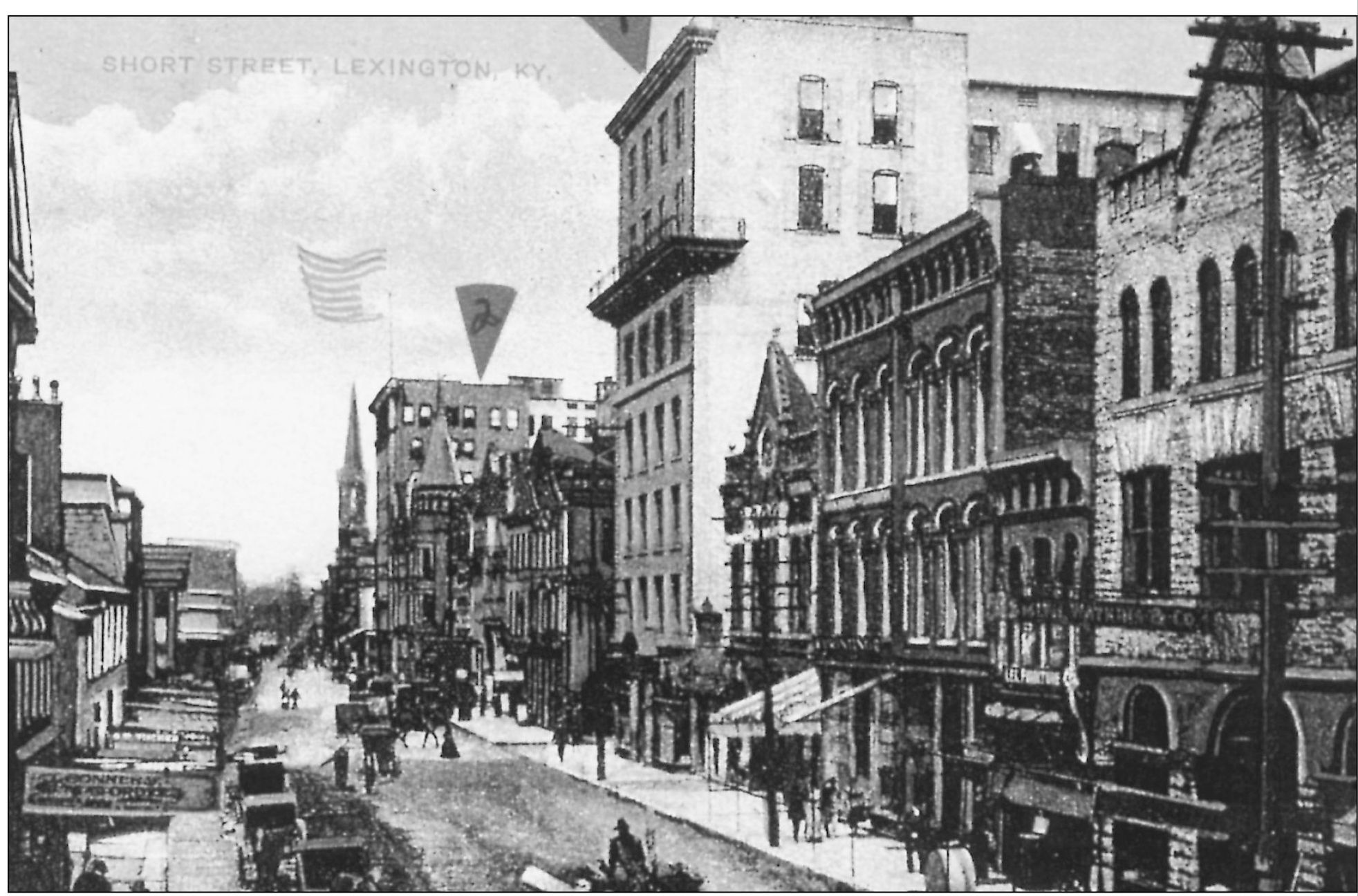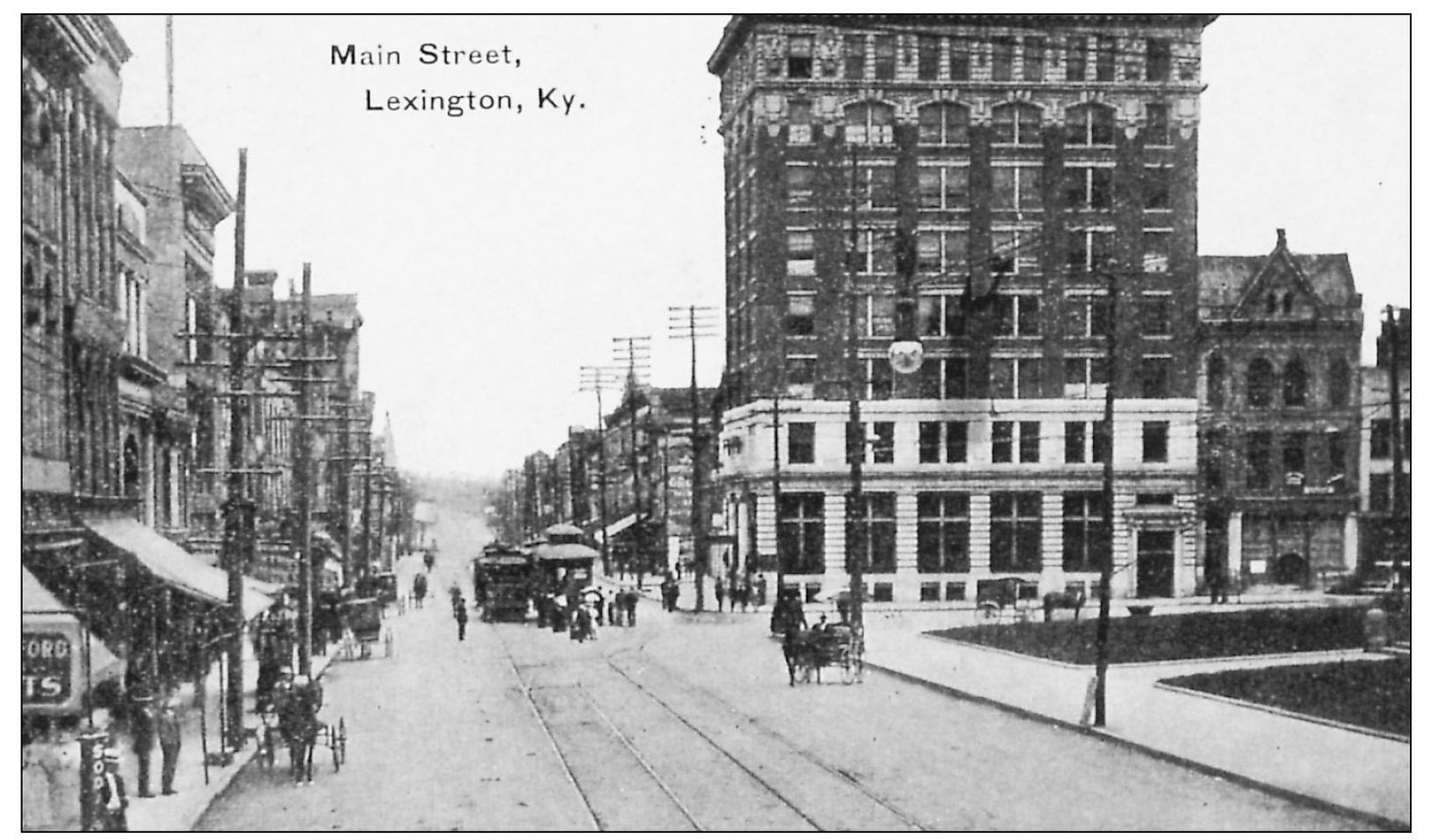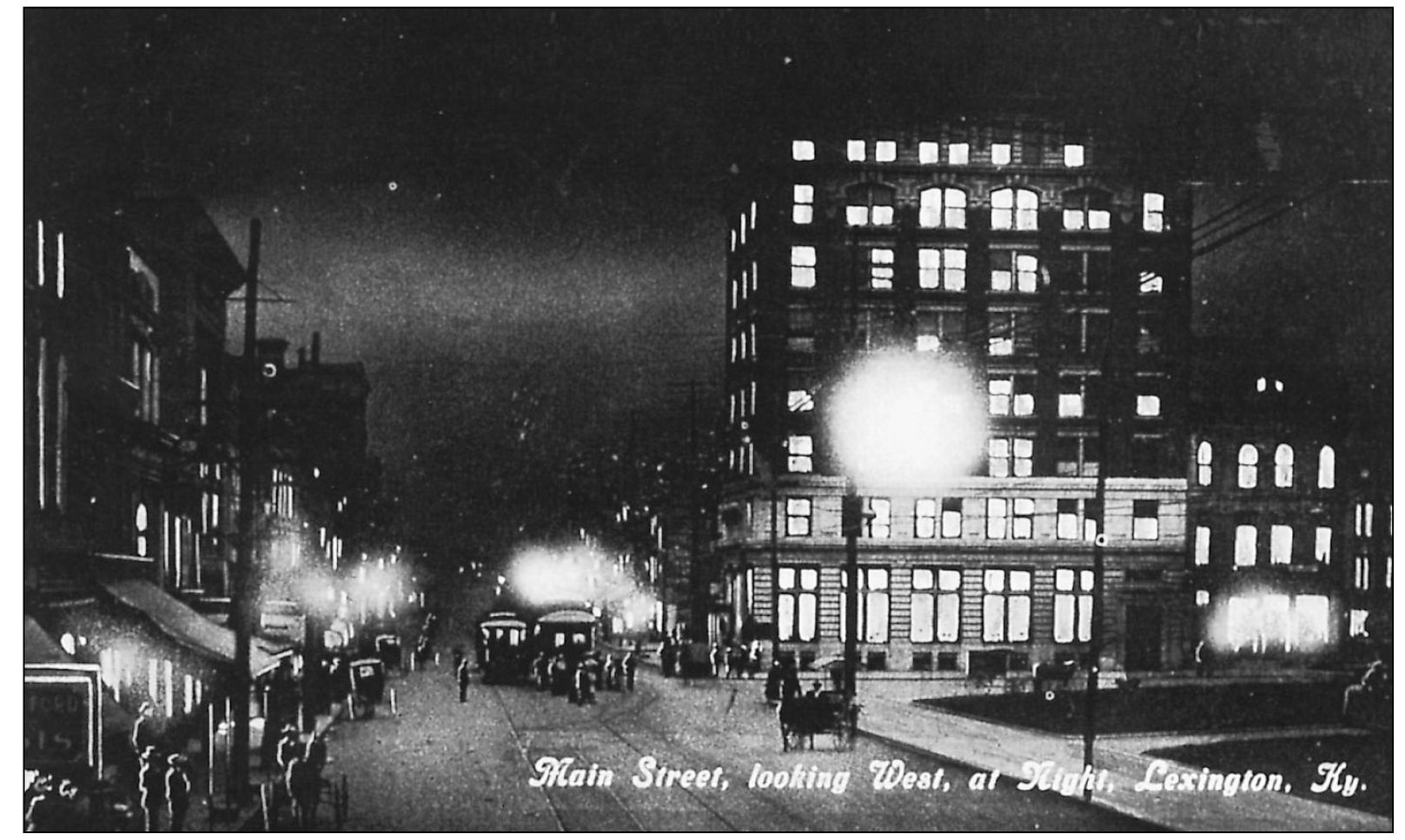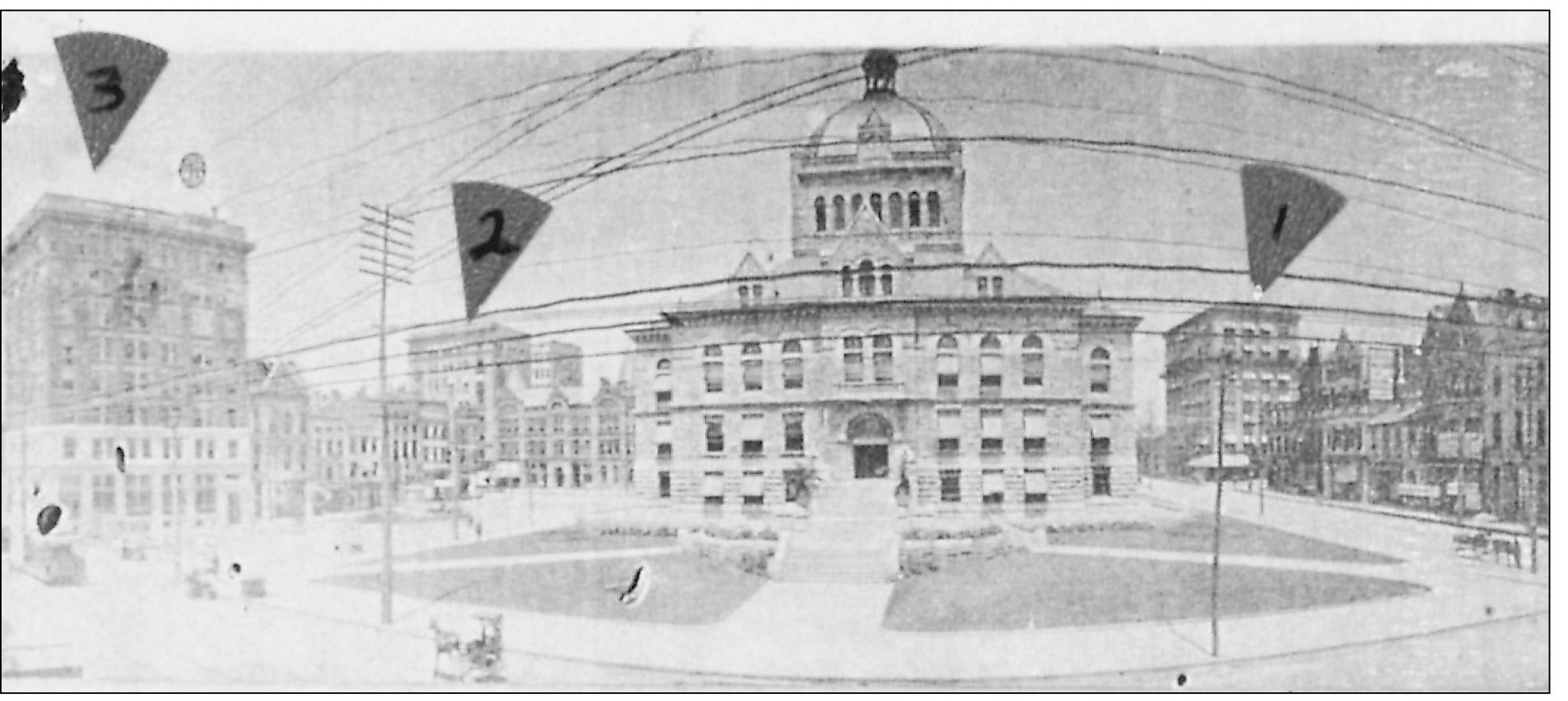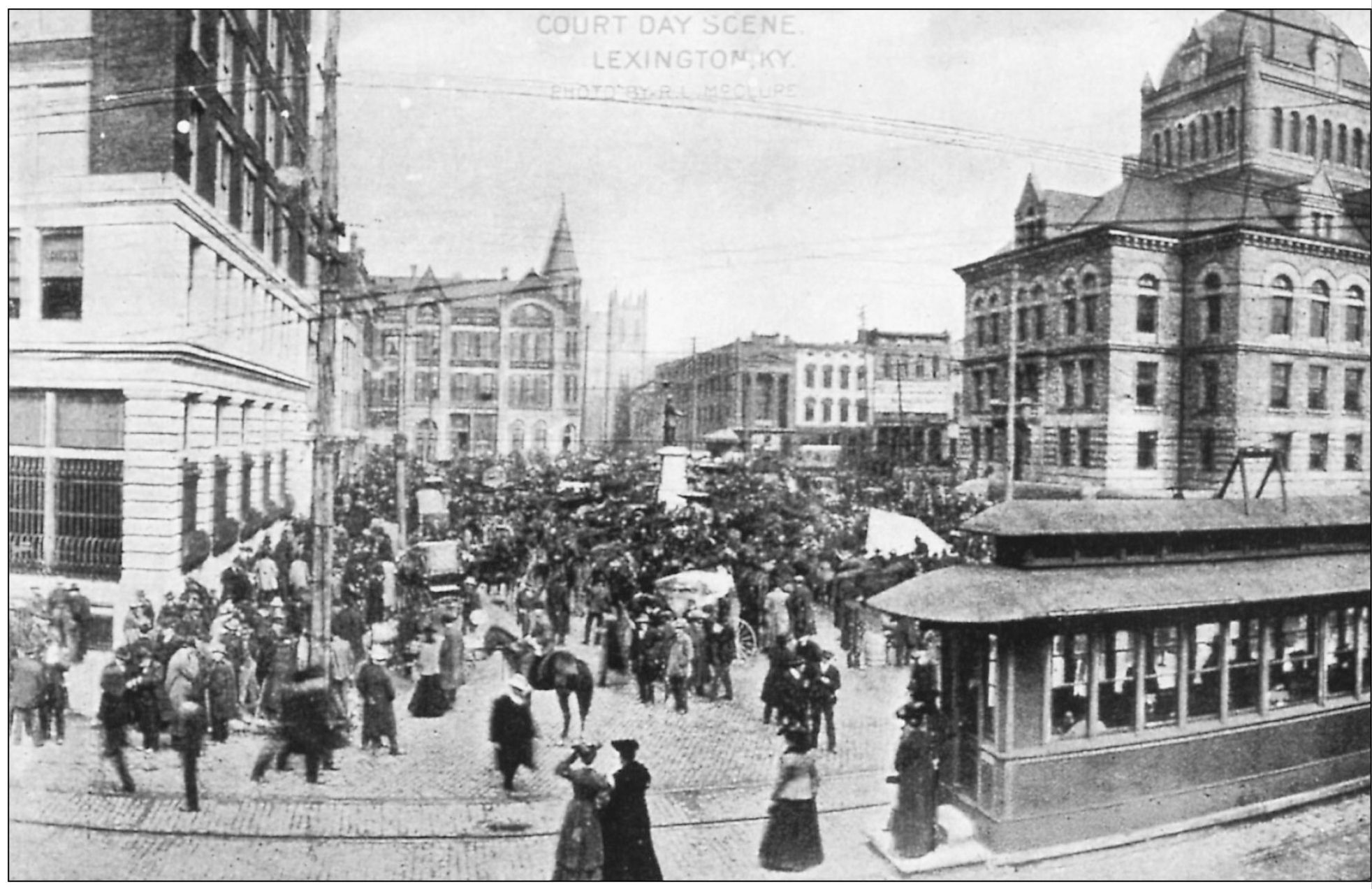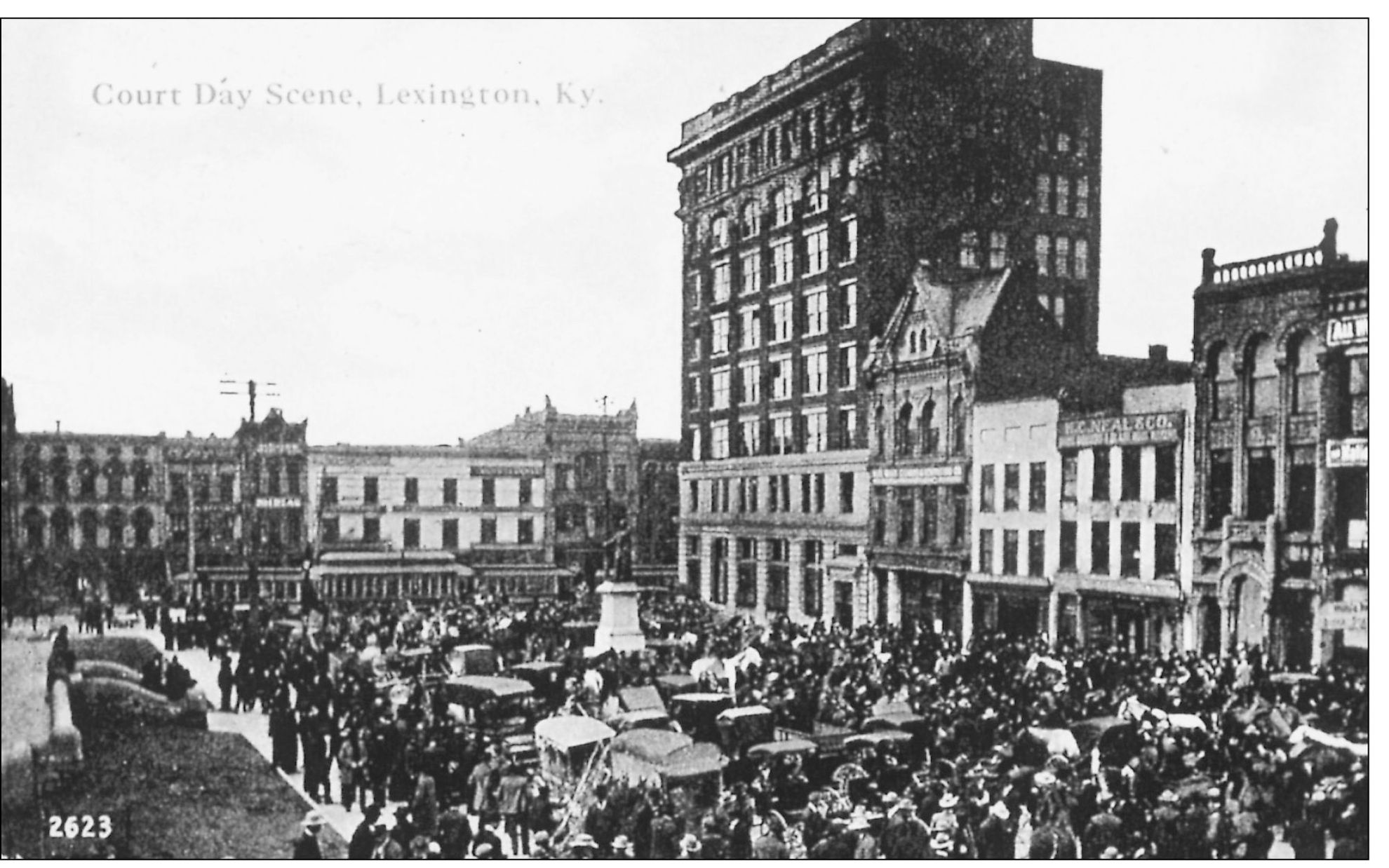One
MAIN STREET, WEST END
This chapter focuses on West Main Street and identifies the first four tall structures built in Lexington (18991914), ending with the New Fayette National Bank Building. Many other buildings followed, but none equaled in height to the Fayette National Bank Building for several decades. Other changes are evident around the tall buildings.
This c. 1905 postcard is a view of Fayette Countys fifth courthouse, which was built between 1898 and 1900. The courthouse faces Main Street between Cheapside Street on the left and Upper Street on the right. Two buildings seen in the background, located on Short Street, are worthy of closer consideration. The building on the left, overlooking Cheapside Street, is located on the northwest corner of Short and Market Streets and identified for years as Northern Bank Company. The 1907 map identifies it as the Lexington Banking and Trust Company, one of several early names. The building on the right, the McClelland Building, is located at the corner of Short and Upper Streets and was the first tall building in Lexington. It was built in 1899 with five stories, and two more stories were added in 1903. The old cornice and iron railing from the previous top floor can be seen on the sixth floor.
This picture shows the Security Trust Company Building, the citys second tallest building (eight stories tall). It was built in 1903 and still stands on the northeast corner of Short and Mill Streets. The postcard has a postmark of 1918.
This c. 1908 postcard view shows the first two tall buildings in Lexington: (1) the seven-story McClelland Building, with its balcony pictured on the north side of Short Street, and (2) the eight-story Security Trust Building farther west, with an upside down flag on the building (the two numbered pointers were added to the picture). The Northern Bank Building has a four-story turret and conic roof and can be seen in front of the Security Trust Building. Another building, Smith Watkins and Company (right), was a store that sold hardware and wagon and agricultural implements. The Central Fire Station is on the left, according to the 1907 map. The fire station was built in 1888 and was moved in 1929.
This postcard view of Short Street looking east shows the first two tall buildings from the opposite direction: (2) the Security Trust and Safety Vault Company Buildinglater renamed the Security Trust Companyand (1) the McClelland Building. The Northern Bank Building can be seen between the two tall buildings.
These day-and-night postcards (top and bottom) are of the same view on Main Street looking west. Both pictures show a clear view of the third tallest building in Lexington, the City National Bank. It opened in 1905 at its location on Main and Cheapside Streets. This building has the same number of floors as the second tallest but appears taller because of its steep, pitched-hip roof.
While one postcard has a postmark of 1912, the other is of a similar time. A traffic light can be seen in both views. Although Lexington was the first frontier city west of the Alleghenies with night lights, gas lights were installed in downtown Lexington in 1853, and electric streetlights were first used in 1883. The City of Lexington Traffic Engineering Department became responsible for the streetlights in 1953.
This postcard, postmarked November 13, 1905, shows all three tall buildings. They are identified in chronological order as follows: (1) the McClelland Building, (2) the Security Trust Building, and (3) the City National Bank. Note the horses and carriages. The building on the right, the Fayette National Bank, will be torn down in 1912 and rebuilt into a 12-story building by 1915. The old Fayette National Bank Building appeared in several postcards before the new Fayette National Building became the fourth tallest building.
This c. 1906 postcard is one of my favorites. It shows the courthouse on Main Street, the Northern Bank Building with its four-story turret, and the City National Bank at Main and Cheapside. The postcard is titled Court Day Scene and depicts the place where the sale of horses, mules, cows, and calves occurred in Lexington every Monday. Note the electric cars that ran downtown from 1890 until 1938. This postcard shows an unusual, and closer, look at the waiting station that was constructed in 1892 from an old streetcar. This is where trolley passengers bought tickets and waited on Main Street. It was razed in 1911.
This is a different view of Court Day, looking south toward Main Street and Cheapside. Court Day sales in Lexington started in antebellum days and continued until October 26, 1921, when it was declared a public nuisance and legally abolished. The 1908 City Directory reveals the following Cheapside Street businesses in this view: R.T. Morrison, Attorney (111); Moving Picture Theater, Theatorium (113); Second National Bank (123); W.H. Crawford, Dentist (127); Logan Brothers, Grain Business (129); Ed Tindle, Barber (131); and American Hemp Company (133). Part of Cheapside Street later became a city park. Note the statue of John C. Breckinridge and the fence that surrounds it.

